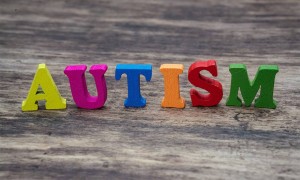According to the WHO, it is estimated that worldwide 1 in 160 children has an Autism Spectrum Disorder (ASD). At least 70 million individuals worldwide have Autism; India has 10 million children on the Autism Spectrum. One in 68 children in India has received a diagnosis of Autism according to the latest reports. It is estimated that 25 to 50% of children diagnosed with ASD never develop spoken-language beyond a few words or utterances.
What is Nonverbal Autism?
Individuals who do not use spoken or verbal language for communication can be termed as ‘nonverbal’. Some of these individuals may have developed minimal spoken language who may be using only single words to communicate. However, these individuals are unable to carry out a significant verbal communication. Autistic children and adults who are nonverbal may have the same abilities of understanding spoken language as autistic people who are verbal. Because of the nature of the spectrum disorders, no two children are the same. Typically, nonverbal children have the need to express and some children may have a lot to say but are unable to express.
What are the causes of being ‘nonverbal’?
Strangely, the causes of nonverbal autism are unknown. A generic reason that can be quoted is that nonverbal children on the Autism Spectrum are ‘differently wired’. Some of the research findings suggest differences in a region of the brain called ‘amygdala’. The amygdala is thought to be associated with the fight or flight response and in relation to social functioning in various animal studies.
Studies conducted specifically on nonverbal autistics have shown several amygdaloid impairments among those with ASD. The amygdala in those with nonverbal autism:
- Have less volume compared to controls
- Contain a higher density of neurons suggesting hyper-connection
- Show a negative correlation between amygdala size and disorder severity among subjects
Recent studies have found that the relatively rare speech disorder apraxia affects nearly 65 percent of children with autism. When we observe their attempts at talking, it is clear that some of these children exhibit characteristics of Verbal Apraxia/Dyspraxia. Vowels are distorted, searching behaviours are exhibited and inconsistent errors are present. Other children are completely silent or just produce occasional vowel sounds in a repetitive pattern. The finding is important because apraxia warrants a specific type of therapy not otherwise part of an autism intervention program.
Communication Options for Nonverbal Children
There are several options to choose from for nonverbal children on the spectrum to communicate. The term Alternative and Augmentative Communication (AAC) broadly refers to any means of communication such as pictures, sign language, devices etc. that replaces traditional speech as the mode of communication. An assessment needs to be made as to which mode of AAC would suit the child’s needs which are followed by training the child and family members to use it as a mode of communication.
AAC Options
There are low-tech home-made choice boards, Yes/No boards, letter and word boards to high-tech iPad Apps Computer, Laptop, Text-to-speech Dynavox, Lightwriter, GoTalk, etc. Some of the popular and widely used options are:
- Picture Exchange Communication System (PECS), where the person hands over a picture to request or express something.
- Sign language, eg British Sign Language (BSL), Makaton, Sign Supported English, or as part of a total communication approach (where a combination of methods is used, eg a person might receive information via speech and signs but express themselves using signs and symbols).
- Communication boards and communication books, where the person can point to words, photos and/or symbols.
- Communication cue cards, used primarily with people who are verbal, can be a reminder of what to say and provide an alternative means to communicate in stressful situations.
- Conversation books, which can use text, pictures or photographs to support conversation.
- Voice output communication aids generate digitized speech when the person presses a symbol or button. The person will need an understanding of cause and effect to use these devices.
Facilitated communication (FC), supported typing or hand over hand, is a technique that involves providing an alphabet board, or keyboard. The facilitator holds or gently touches the disabled person’s arm or hand during this process and attempts to help them move their hand and amplify their gestures. In addition to human touch assistance, the facilitator’s belief in their communication partner’s ability to communicate seems to be a key component of the technique.
Rapid Prompting Method (RPM) uses a “Teach-Ask” paradigm for eliciting responses through intensive verbal, auditory, visual and/or tactile prompts. RPM presumes competence to increase students’ interest, confidence, and self-esteem. Prompting competes with each student’s self-stimulatory behaviour and is designed to help students initiate a response. Student responses evolve from picking up answers to pointing, to typing and writing which reveals students’ comprehension, academic abilities and eventually, conversational skills. RPM is a low-tech approach in that is requires only an instructor, student, paper, and pencil.
Read a teacher’s perspective on Nonverbal Autism here.
Subscribe to our blog for more information on a variety of topics related to speech-language and communication!

